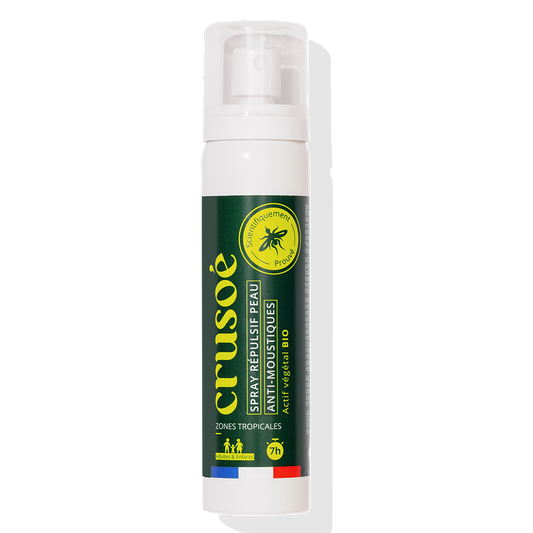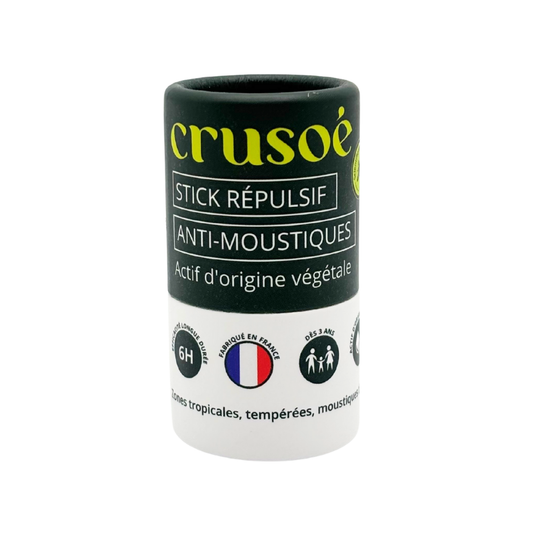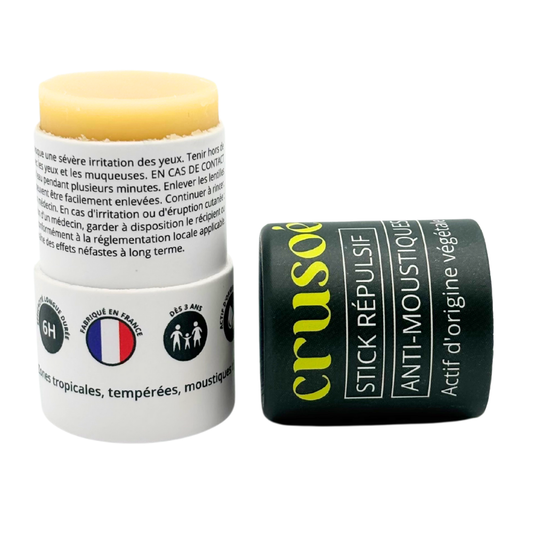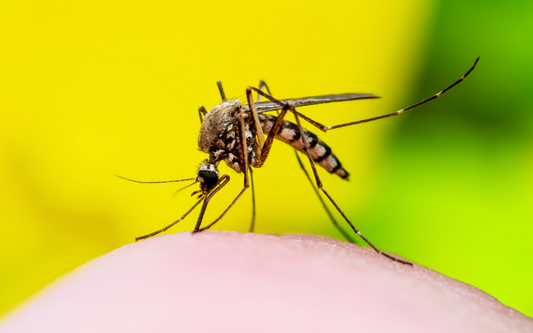Increasing urbanization, the globalization of trade in goods and people, and climate change are all contributing significantly to the expansion of mosquito-borne diseases. The number of dengue cases has increased thirty-fold over the past fifty years, and the number and frequency of malaria, chikungunya, and yellow fever epidemics have been increasing since 2014. Faced with this alarming situation, due in part to the physiological resistance and behavioral changes of mosquitoes, as well as their environmental damage, scientists are seeking alternatives.
- Transgenic mosquito strategies
In recent years, rather than using insecticides, indiscriminately eliminating all mosquitoes from an ecosystem, scientists have focused on two new, more selective strategies with less environmental impact, using genetically modified mosquitoes :
- the selective suppression of disease-carrying mosquito species , since only about 10% of mosquito species transmit diseases to humans. This strategy relies on the reproduction and release of transgenic mosquitoes of a target species, eventually leading to the disappearance of their population.
- Genetic modification of disease-carrying mosquito species so that they no longer transmit their pathogens to humans. Instead of eliminating the mosquitoes themselves, this strategy of modifying the mosquito genome makes it possible to eliminate the pathogens they contain, which are the cause of the diseases transmitted.

- Selective suppression using transgenic mosquitoes
Over the past ten years, the emergence of new genetic engineering technologies, such as the famous and controversial CRISPR Cas9 system, winner of the Nobel Prize in Chemistry in 2020, has made it possible to create a wide variety of transgenic mosquitoes, with a view to their eradication .
The gene drive system, using CRISPR Cas9, allows a gene to be transmitted with near certainty to its offspring, by freeing itself from natural selection. This technique has allowed, for example, the transmission of sterility genes in female mosquitoes, which led to the total extinction in the laboratory of a population of Anophele gambiae , a malaria-carrying mosquito, in 7 to 11 generations. 1 Other methods of genome modification have allowed the production of eggs containing future sterile males, 2 females that cannot fly, 3,4 or even mosquitoes that self-intoxicate in the absence of an antibiotic. 3,4
Although these new techniques appear to be very effective in eradicating a target mosquito population, several drawbacks should be noted.
The cost of these methods, due to the production technique and the quantity of mosquitoes to be released regularly, remains very high.
In addition, these techniques must also be tested outside a laboratory; but a number of precautions must be taken since The release of transgenic mosquitoes into the environment is irreversible . For example, the technology based on the self-intoxication of mosquitoes had obtained an initial experimental use permit for the release of 450,000 transgenic Aedes aegypti in Brazil. However, this experiment did not reduce the population of Aedes aegypti . On the contrary, in eighteen months, the number of mosquitoes returned to the same level as that of the pre-release. 7 Indeed, this test quickly lost its effectiveness since phenomena of sexual discrimination against transgenic mosquitoes were noted: wild mosquitoes only reproduced with wild mosquitoes. In addition, during this test, a small proportion of transgenic mosquitoes managed to create viable hybrid offspring, which is the opposite of the desired effect. 6 Thus, this experiment artificially created a new strain of mosquitoes without managing to reduce the population of disease-carrying mosquitoes. Despite this first failure, a new permit for the mass release of 2.4 billion transgenic Aedes aegypti mosquitoes , produced using the same technology as in Brazil, has just been authorized in California and Florida between 2022 and 2024. 5
Furthermore, the stability of the genome of transgenic mosquitoes is still unknown in nature. Indeed, since mosquitoes reproduce quickly, genetic resistance or adaptation would not be surprising and regular releases of transgenic mosquitoes, essential for this type of approach, would lead to maintaining a mosquito population rather than reducing it .
Finally, the eradication of a species in a given place, in addition to presenting a negative ethical and ecological aspect, can lead to a re-invasion of neighboring populations of the same species or other species occupying the same niche.
- Genetic modification
Thus, the transgenic approach would find a better application in the population modification strategy, which would be less expensive and more sustainable ethically and ecologically. A number of methods, allowing the production of new mosquitoes that no longer transmit disease, have recently been developed in the laboratory. For example, the gene drive system has allowed the transmission of a gene ensuring the production of antimicrobial toxins in the mosquito intestine, preventing the survival of Plasmodium , the parasite that causes Malaria. 8 Similarly, other methods of genetic modification have allowed modified mosquitoes to produce molecules (peptides, antibodies and RNAi) preventing the replication and transmission of Dengue, Chikungunya, and Zika viruses . 10 However , these techniques have not yet been tested in the open field .
As with the suppression strategy, many questions remain about the long-term effectiveness and environmental cost of this genetic modification strategy: do these transgenic mosquitoes have a modified genome that is sufficiently stable to cope with natural evolution? What is the fate of mosquito pathogens? Is there a risk of inducing the creation of more virulent or more resistant pathogens?
Claire Grison - Biochemistry Engineer, Doctor of Organic Chemistry and Scientific Editor
References:
[1] K. Kyrou, AM Hammond, R. Galizi, N. Kranjc, A. Burt, AK Beaghton, T. Nolan and A. Crisanti, Nat Biotechnology , 2018, 36, 1062–1066.
[2] NP Kandul, J. Liu, HM Sanchez C., SL Wu, JM Marshall and OS Akbari, Nat Commun , 2019, 10, 84.
[3] G. Fu, RS Lees, D. Nimmo, D. Aw, L. Jin, P. Gray, TU Berendonk, H. White-Cooper, S. Scaife, H. Kim Phuc, O. Marinotti, N. Jasinskiene, AA James and L. Alphey, Proceedings of the National Academy of Sciences , 2010, 107, 4550–4554.
[4] GMC Labbé, S. Scaife, SA Morgan, ZH Curtis and L. Alphey, PLOS Neglected Tropical Diseases , 2012, 6, e1724.
[5] Environmental Protection Agency, Experimental Use Permit Amended for 93167-EUP-2 to Allow Releases of OX5034 Aedes aegypti in Florida and California, https://www.regulations.gov/document/EPA-HQ-OPP-2019-0274 -0470.
[6] BR Evans, P. Kotsakiozi, AL Costa-da-Silva, RS Ioshino, L. Garziera, MC Pedrosa, A. Malavasi, JF Virginio, ML Capurro and JR Powell, Sci Rep , 2019, 9, 13047.
[7] JR Powell, Insects , 2018, 9, 139.
[8] A. Hoermann, S. Tapanelli, P. Capriotti, G. Del Corsano, EK Masters, T. Habtewold, GK Christophides and N. Windbichler, Elife , 2021, 10, e58791.
[9] P.-S. Yen, A. James, J.-C. Li, C.-H. Chen and A.-B. Failloux, Commun Biol , 2018, 1, 1–9.
[10] A. Buchman, S. Gamez, M. Li, I. Antoshechkin, H.-H. Li, H.-W. Wang, C.-H. Chen, MJ Klein, J.-B. Duchemin, PN Paradkar and OS Akbari, Proc Natl Acad Sci USA , 2019, 116 , 3656–3661.













